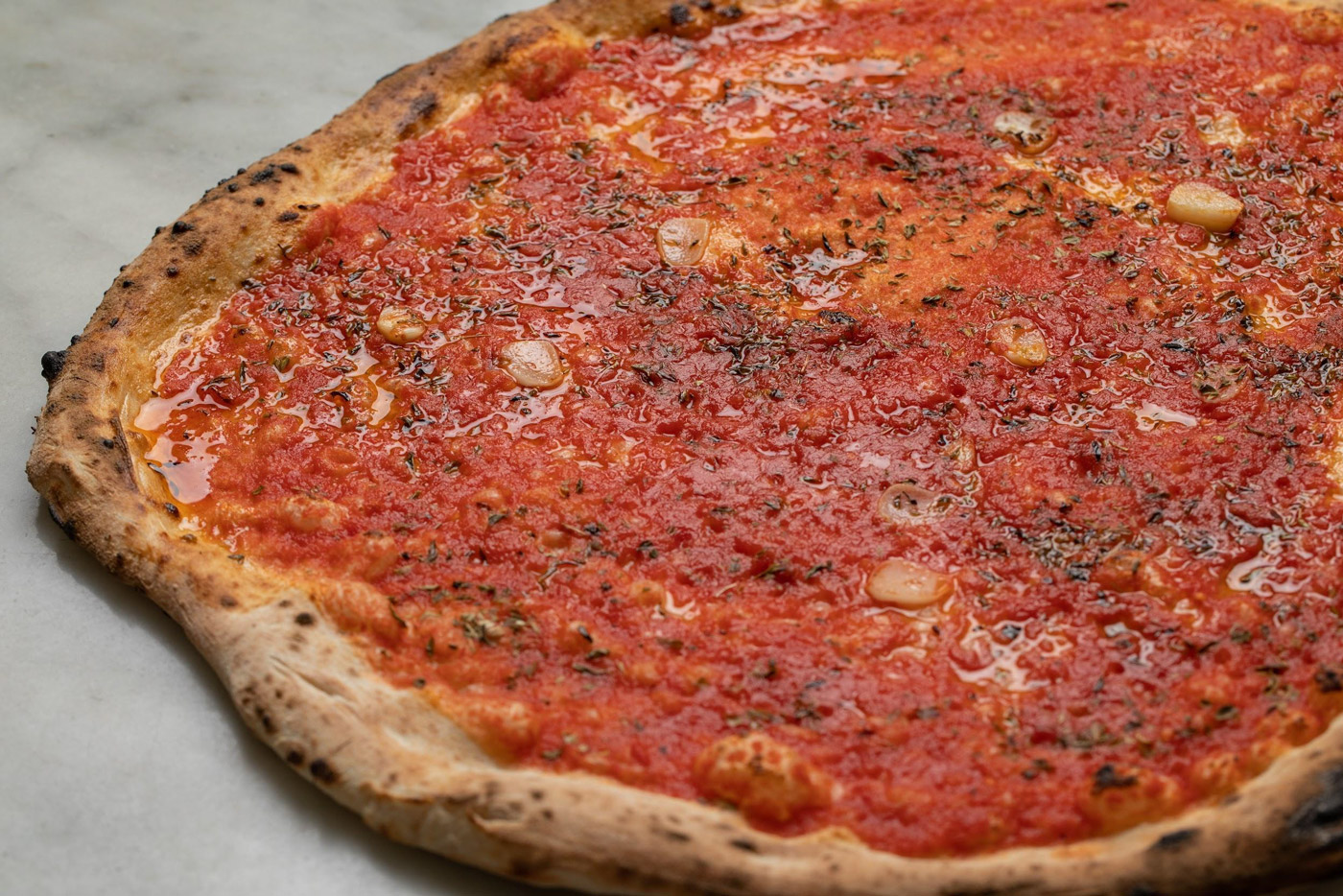For the dough
3 teaspoons active dried yeast (1 ½ envelopes)
2 cups lukewarm water
8 cups organic semolina
1 ½ tablespoons salt
2 ½ tablespoons extra virgin olive oil
For the marinara topping
1 can whole peeled tomatoes (about 14 oz), pureed until chunky-smooth
oregano, to taste
1 clove of garlic (or more, to taste), chopped or grated
salt, to taste
4 tablespoons extra virgin olive oil
Dissolve the yeast in 1 ½ cups of the lukewarm water, then add it to the organic semolina, in a large bowl. Mix until smooth and well-combined.
In another bowl, dissolve the salt in the remaining water, then add it to the organic semolina mixture along with the extra virgin olive oil and knead with your hands to mix all the ingredients.
At this point, put the dough on a work surface dusted with a little semolina and continue to knead until you get an elastic dough. Place it in a floured bowl and cover with a clean cloth or cling film; leave to rise for about 8 hours until doubled.
Remove the dough from the bowl and cut it into 4 pieces. Sprinkle the work surface with a little organic semolina flour, and working one at a time, roll out each piece with a rolling pin.
Place on a baking sheet, spread each with a quarter of the tomatoes, then sprinkle with salt, garlic and oil.
Bake the pizzas for 10 – 15 minutes at 450°F, until the dough is puffed up and cooked through. Eat right away, deliciously fragrant and hot!
CURIOSITY
Today the whole modern world is crazy about pizza! The most known and loved dish, however, is much older than you might think: older (far older) than Italy itself!
According to researchers, the Etruscans cooked a similar focaccia by putting the sauce on it, but pizza as we know it today was born in the 17th century in the Kingdom of Naples. Until the 18th century, it was still “white“, that is, seasoned with garlic, lard and coarse salt in the everyday version or with cheese and basil in the richer version.
When tomatoes arrived from South America and were finally embraced as edible, pizza turned “red”. Historically, the first documented “red” pizza is the “marinara“– topped with tomato, olive oil, oregano and garlic. One might ask, why is it named marinara, when it has no fish in it? The name comes from the fishermen’s habit of making up the sauce when they returned from a night of fishing—whatever they hauled up from the sea tasted delicious in the garlicky tomato sauce.
In 1889, the pizza “margherita” was created when Queen Margherita of Savoy, Wife of Umberto 1, visited Pizzeria Brandi (still there!), and fell in love with this pizza. With the colors of the Italian flag, tomato basil and mozzarella, and the Queen’s love of it, named in homage to Queen. There is a plaque on the wall, and if you ask, the owner will happily tell you all about it.
